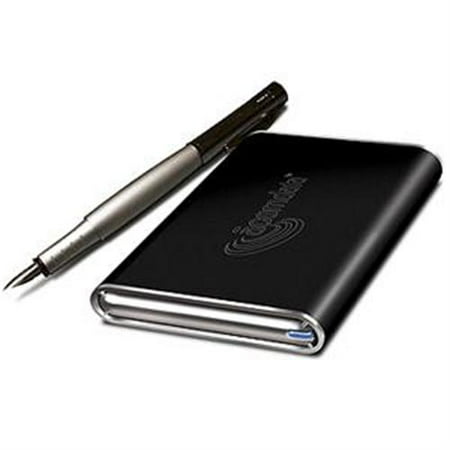Usb External Hard Drive Enclosure Not Recognized
SymptomExternal hard drive is called portable hard drive as well. With large capacity, it isalways used to store or backup data. In most cases, external hard drive or secondhard drive will present automatically after connected to your computer. However, itis possible that the external hard drive not showing up in Windows 10 File Exploreror “This PC”.
In this case, you can open to see whether the hard drive is visible in it at first. Hard drive not showing up in This PCPress “Windows”+ “R”, type “diskmgmt.msc” and hit “Enter”, you will access DiskManagement interface. When the hard drive is not showing up in File Explorer butappears in Disk Management, you can try the following methods.
Assign drive letter to the external hard driveWhen the external has no drive letter, it will be invisible in File Explorer. At thistime, you should assign a drive letter.
Firstly, right click the partition thatdoesn’t have a drive letter and choose “Change Drive Letter and Path.” Then clickon “Add”, choose a drive letter and click “OK” to give it a drive letter. Afterthat, you can access the hard drive from File Explorer. Initialize the external hard drive via Disk ManagementWhen the external hard drive is not initialized and appears as an unallocated spaceor without showing disk capacity, you can initialize it as follows:1. Right click the hard drive that needs to be initialized2. Select “Initialize Disk” and set the disk partition style as MBR or GPT3. Right click the disk and choose “Create New Simple Volume”.Notice: As initialization will cause data loss, you’d betterbackup all the important data on the external hard drive before initializing it.
Usb Hard Drive Not Detected
Rebuild MBR without data lossIt is well-known that MBR or Master Boot Record is essential to a hard drive. When itis damaged by some accidents such as virus attacks or inappropriate operation, thehard drive might display as unknown and not initialized external hard drive in DiskManagement. Under this case, what you should do is to rebuild MBR via reliable andsoftware -.First of all, AOMEI Partition Assistant.Install and fire up it.
Then you can follow the steps to rebuild MBR on the externalhard drive.Step 1. Right click the uninitialized disk and choose “RebuildMBR”.Step 2. Set the type of MBR based on your currentoperating system. Then, click “OK”.Step 3. Click on “Apply” to implement this operation.Format external hard drive to NTFS or FAT32If the external hard drive has been formatted as file system that not recognized byWindows or has no file system, it will not show up in File Explorer properly. Insuch case, you can format external hard drive to certain file system compatible withWindows system. AOMEI Partition Assistant will be a nice solution.It allows you toformat external hard drive like Samsung and WD external hard drive etc.
To FAT32without the limitation of 32GB in partition size, exFAT or NTFS effortlessly. Thedetailed steps are as follows:Step 1.

Run AOMEI Partition Assistant. Right click the external harddrive partition that you need to format and choose “Format Partition”.Step 2. Choose one file system compatible with Windows system andclick “OK”.Step 3. Review the operation and click “Apply” to implement it.PS: Formatting external hard drive partition will delete alldata on it.
If there is any important data, you’d better backup or transfer it tosomewhere before formatting. Hard drive not showing up in Disk ManagementIf the external hard drive is not recognized by Windows 10 and doesn’t display inDisk Management, it is likely that there is something wrong with USB port, Windowsdriver and so on. To solve the problem external hard drive not showing up in DiskManagement on Windows 10, you have to take specific steps based on differentsituations.

Check Windows driver via Device ManagerWhen Windows 10 Disk Management doesn’t list the external drive, you can checkwhether there is a driver problem on Windows via Device Manager.1. Press “Windows”+ “R”, enter “devmgmt.msc” and hit “Enter”.2. Click “Disk Drives”; if the external hard drive is with a yellow exclamation mark,it is problematic.3. Right-click the problematic drive, select “Properties”, and read the messagecarefully.4. To fix such error, under Driver table, click on “Update driver” to install updateddrivers. Or you can click on “Uninstall” to uninstall the driver and restart yourcomputer; after rebooting, the driver will be automatically reinstalled andreconfigured.
Examine USB port and enable USB Device in BIOSIf you can’t find out the external hard drive even in BIOS, it might be caused bydisabling interface in BIOS. Thus, you can enter BIOS to enable the USB device. Thenrestart your computer to see whether the problem is solved.

If you still can’t seethe drive in BIOS, you can check the USB port is “OK”.First of all, you need tounplug the external hard drive and plug it into another USB port to see if it works.If you have connected the drive via USB hub, connect it to computer itself. Then, ifyou can see the drive in Disk Management but not in This PC, you take measuresnarrative in previous part.
External Usb Drive Not Recognized
Diagnose the external hard driveHaving done all of these, if the problem external hard drive not showing up in DiskManagement Windows 10 still exists, don’t hurry to abandon the external hard drivemight be dead. You can employ professional hard drive diagnostic software to checkif you have to replace this external hard drive.